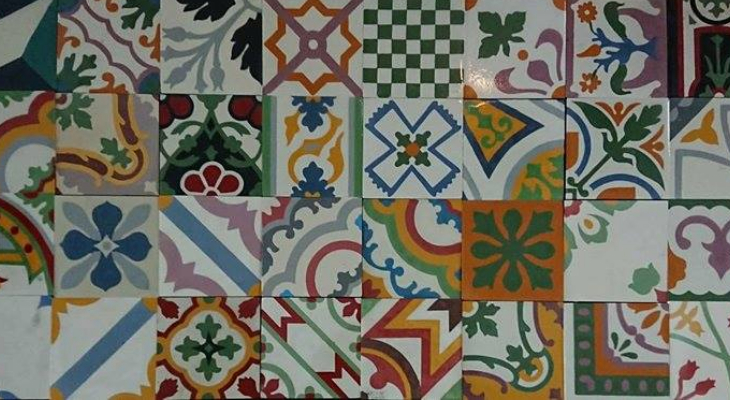
Malta Tiles / Facebook
Robert Lia was once a stone mason who specialised in restoring houses of character and Malta’s traditional stone stairs. But, since 2012, another craft has captured his interest and his heart. Indeed, thanks to his passion, the traditional art of handmade Malta tiles continues.
1. What is Malta Tiles about?
"Malta Tiles keeps alive the traditional handmade, patterned, cement tiles that are traditional of Malta. In 2012, Joe Camilleri of the former Malta Tiles was about to retire; business was slow and he was getting to advanced age. I fell in love with his work so I began to restore the old forms as well as making replicas of traditional forms no longer found and began to focus on this work instead. Then, in 2017, I officially formed the company Malta Tiles Ltd."
2. Why make traditional handmade Maltese tiles when there are easier alternatives?
"Handmade Maltese tiles are a work of art. They require passion to make as they are not easy to produce. The whole process is manual and it is a long process to create each 20cm x 20cm tile. There is strong competition because imitation tiles are easily made by printing on other types of tiles, but the handmade tile is much more beautiful and authentic and this is much appreciated."
3. What is special about traditional Maltese tiles?
"Maltese tiles are unique in the way they are made, in their individual designs and the way they are placed on the ground in the form of a carpet. Every room is instantly decorated with character when Maltese tiles are placed in it."
4. Why do people like them so much?
"People appreciate Maltese tiles because they are an artwork. People can choose the design and also the colours and have them made to order. They can even create their own design and have it custom made. They can cover a whole floor, part of it, or use the tiles to make a feature wall. It is up to the customer and it depends on how creative and bold they want to be!"
5. How are traditional handmade pattern cement tiles made?
"Maltese tiles are made with marble dust (traditionally, sand from the sea was used), white cement and pigment while the back side is made from sand and black cement."
"Each tile is made in three phases. The first is the mastig, which is where the marble dust is mixed with white cement and pigment. The second is putraxx, which is where fine sand is mixed with black cement. The third phase is the mirange, which is the back side of the tile made from thicker sand mixed with black cement."
"The tiles are handmade by pouring the mixtures progressively into the forms and then pressed. The following day, the tiles are cured by being placed in water and left to dry for some time. The tiles are then ready to be packed and sent to the client."
6. Is there anything else you'd like to add about these wonderful works?
"Our goal is to keep this traditional Maltese skill alive. We are keen to inform and teach adults and children so that this work does not become extinct like other traditional skills which have been lost in time. I feel very grateful for the clients who have worked with us and all those who offer their support in this venture. It is thanks to this support that Malta Tiles has continued to grow since 2012."
We love Robert Lia’s passion for Malta Tiles and feel thankful that Maltese tiles are still available thanks to him! So are you feeling creative about decorating your home with some Maltese flavour?